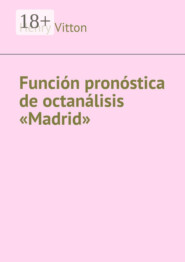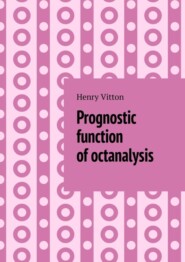По всем вопросам обращайтесь на: info@litportal.ru
(©) 2003-2025.
✖
Book of Changes («I Ching») with octanalytic commentary
Настройки чтения
Размер шрифта
Высота строк
Поля
When a person stops or degrades in his inner development, he attracts situations that hinder his activity, stop his activity or destroy his activity.
And when a person develops himself internally, he attracts situations that contribute to his further inner development.
A person in his inner development goes through the following states:
– a stupid person who often ignores the use of consciousness;
– an intelligent person who uses the 1-Mind/Gen instance of consciousness, builds relationships according to the scheme “I am higher, you are lower”;
– a friendly person who uses the 4-Heart/Zhen instance of consciousness, builds relationships according to the scheme “I and you are on the same level”;
– a wise person who uses the 5-Soul/Li instance of consciousness, builds relationships according to the scheme “You are higher, I am lower”;
– an Universe’s person who uses the instance of superconsciousness 0-Source/Kun, an intuitive choice, builds relationships according to the scheme “I am the Unified Consciousness”.
7. Designations of 64 hexagrams of the Book of Changes (“I Ching”)
The ancient Chinese Book of Changes (“I Ching”) offers eight trigrams to describe the states of living systems. Let’s list them in order according to the harmonious, impeccable hierarchy, from top to bottom, Kun, Qian, Dui, Li, Zhen, Xun, Kan, Gen.
In the interaction of two living systems (a person and the situation), 64 combinations of the dominant instance (trigram) of a person and the dominant instance (trigram) of the situation are possible. These person-situation combinations are characterized in the Book of Changes with the help of 64 hexagrams.
According to the theory of the “Book of Changes”, the entire world process is an alternation of situations resulting from the interaction and struggle of the forces of light and darkness, tension and compliance, and each of these situations is symbolically expressed by one of the 64 hexagrams.
To describe 64 combinations of a person-situation (64 hexagrams), we use a two-digit designation. The left digit is the digit of the person’s dominant instance, the right digit is of the situation. Dominant instances 1-Mind, 2-Ratio, 3-Irratio, 4-Heart, 5-Soul, 6-Subconscious, 7-Imagination, 0-Source are designated by the digits 1, 2, 3, 4, 5, 6, 7, 0. Then the designation, for example, 34-combination, shows the combination of the 3-Irratio/Xun dominant instance (trigram) of a person and the 4-Heart/Zhen dominant instance (trigram) of the situation.
8. Octanalytic formula of the day
When analyzing the interaction of a person and the situation, it is necessary to take into account that the octanalytic formula of personality is unchanged throughout a person’s life, and the octanalytic formula of the day (situation) changes every day.
For example, for 04/10/2022, the day of person-situation interaction, the octanalytic formula of the day is
10 lunar day / 31-Leo / 60% + / / 32-Aries / 5-32-Tiger.
This octanalytic formula of the day indicates the congenital dominants of the day 04/10/2022:
• instance 5-Soul/Li (“five” as a background dominant);
• instance 3-Irratio/Xun (“three” thrice as the first dominant);
• instance 2-Ratio/Kan (“two” twice as the second dominant);
• instance 1-Mind/Gen (“one” as the second dominant).
One of these congenital dominants (5-Soul/Li, 3-Irratio/Xun, 2-Ratio/Kan, 1-Mind/Gen) of the day is most likely to participate that day as the situation dominant in the person-situation interaction.
By compiling the octanalytic formulas of the day for all days of the month, one can foresee which congenital dominant states of the situation will most likely manifest themselves on specific days of this month.
9. Brief description of instances properties of the psyche (Fu Xi trigrams)
• 000-Kun, mother – introverted instance 0-Source/Kun (Unified Consciousness) functions in the “horn of plenty” mode based on the principle of impeccability; universe’ love [3];
• 111-Qian, father – extroverted instance 7-Imagination/Qian generates new images, fantasies, dreams; imaginary love [3];
• 110-Dui, third daughter – introverted instance 6-Subconscious/Dui does not have freedom of choice, with the aim of the embodiment of images, the embodiment of a dream, creates or perceives from the outside and stores in itself programs of action; suggestible love [3];
• 101-Li, second daughter – extroverted instance 5-Soul/Li builds relationships according to the scheme “You are higher, I am lower”, shows submission, service, devotion, altruism; sacrificial love [3];
• 100-Zhen, first son – introverted instance 4-Heart / Zhen shows managerial abilities, builds relationships according to the scheme “I and you are on the same level”, equality, building friendly, cordial relations; friendly love [3];
• 011-Xun, first daughter – extroverted instance 3-Irratio/Xun shows creativity, performs spontaneous, unpredictable, irrational actions, shows a childish state, sincerity, carelessness; sexual love [3];
• 010-Kan, second son – introverted instance 2-Ratio/Kan performs rational actions, puts everything in order, puts it in a certain framework, shows care, parental love [3];
• 001-Gen, third son – extroverted instance 1-Mind/Gen builds relationships according to the scheme “I am higher, you are lower”, shows a sense of superiority, selfishness, profit, unscrupulousness, lies, desire for pleasure, reasoning, analytic abilities; egoistic love [3].
10. Determining the number of the hexagram in the Table 1
The Table 1 shows the numbers of 64 hexagrams according to octanalysis (in brackets – according to King Wen). The following are octanalytic interpretations of 64 hexagrams in the sequence of octanalysis.
The sequence of hexagrams according to octanalysis, which we will also call “harmonious sequence of hexagrams”, is formed as follows.
Eight hexagrams #1 – #8 successively describe combinations of a person-situation: 00-, 70-, 60-, 50-, 40-, 30-, 20-, 10-combination. This sequence of hexagrams #1 – #8 corresponds to the harmonious 07654321-hierarchy of instances of the human psyche in combination with instance 0-Source/Kun of the situation. Similarly, the sequence of the next eight hexagrams #9 – #16 is formed in combination with instance 7-Imagination / Qian of the situation, etc.
When moving from one group of eight hexagrams to the next group of eight hexagrams, the instance of the situation changes in accordance with the harmonious 07654321-hierarchy of instances of the psyche.
Thus, the sequence of 64 hexagrams according to octanalysis corresponds to the harmonious 07654321-hierarchy of instances of both a person and the situation. Therefore, the sequence of hexagrams according to octanalysis is called “harmonious sequence of hexagrams”.
This means that any transition from the previous to the next hexagram according to octanalysis is harmonious for a person. For example, a person is in a state that corresponds to hexagram #14 according to octanalysis. Then octanalysis recommends that a person make efforts to move to a state that corresponds to hexagram #15 according to octanalysis. Such a transition is harmonious for a person.
To use the Table 1, first compare the observed properties of the states of the person and the situation with a brief description of the properties of the instances of the psyche (Fu Xi trigrams) and determine which combination of the states of the person and the situation is manifested in the person-situation interaction.
For example, for a combination of a 0-state of a person








